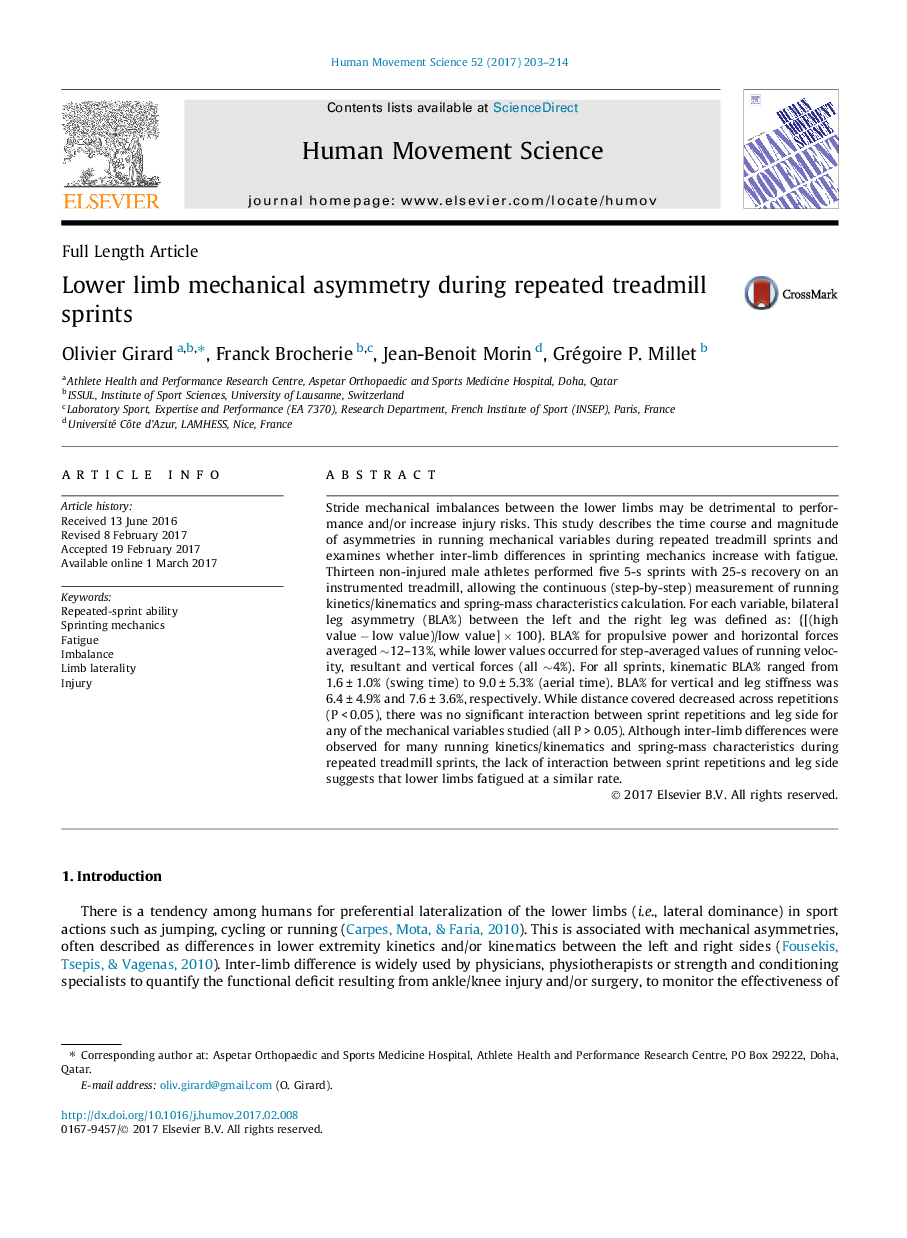| کد مقاله | کد نشریه | سال انتشار | مقاله انگلیسی | نسخه تمام متن |
|---|---|---|---|---|
| 5042070 | 1474213 | 2017 | 12 صفحه PDF | دانلود رایگان |
- Repeated treadmill sprinting is asymmetric in many kinetics/kinematics and spring-mass characteristics.
- Larger bilateral leg asymmetry is shown for horizontal forces and propulsive power.
- Lower limbs fatigue at a similar rate across sprint repetitions.
Stride mechanical imbalances between the lower limbs may be detrimental to performance and/or increase injury risks. This study describes the time course and magnitude of asymmetries in running mechanical variables during repeated treadmill sprints and examines whether inter-limb differences in sprinting mechanics increase with fatigue. Thirteen non-injured male athletes performed five 5-s sprints with 25-s recovery on an instrumented treadmill, allowing the continuous (step-by-step) measurement of running kinetics/kinematics and spring-mass characteristics calculation. For each variable, bilateral leg asymmetry (BLA%) between the left and the right leg was defined as: {[(high value â low value)/low value] Ã 100}. BLA% for propulsive power and horizontal forces averaged â¼12-13%, while lower values occurred for step-averaged values of running velocity, resultant and vertical forces (all â¼4%). For all sprints, kinematic BLA% ranged from 1.6 ± 1.0% (swing time) to 9.0 ± 5.3% (aerial time). BLA% for vertical and leg stiffness was 6.4 ± 4.9% and 7.6 ± 3.6%, respectively. While distance covered decreased across repetitions (P < 0.05), there was no significant interaction between sprint repetitions and leg side for any of the mechanical variables studied (all P > 0.05). Although inter-limb differences were observed for many running kinetics/kinematics and spring-mass characteristics during repeated treadmill sprints, the lack of interaction between sprint repetitions and leg side suggests that lower limbs fatigued at a similar rate.
Journal: Human Movement Science - Volume 52, April 2017, Pages 203-214
